
With a brief look back to admire the view.
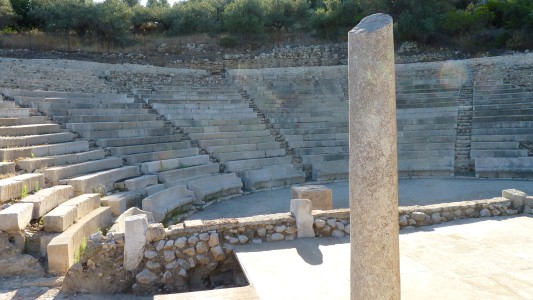
This is the little theatre in the middle of Epidavros.
The real one is about 12 km back the way we came.
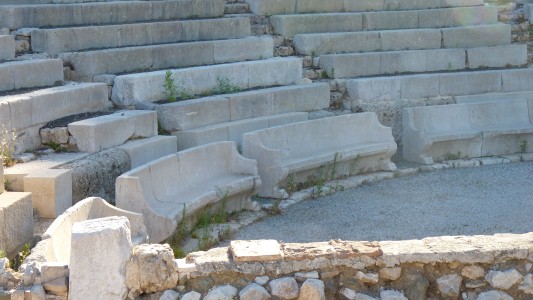
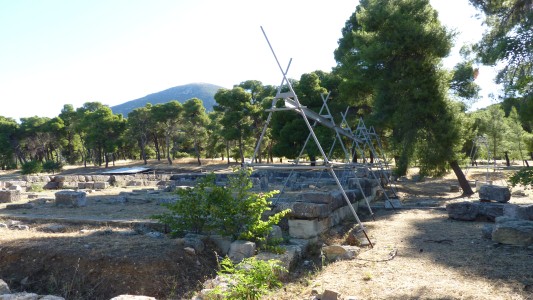
A centre of healing.
The scaffold is for a bit of rebuilding.
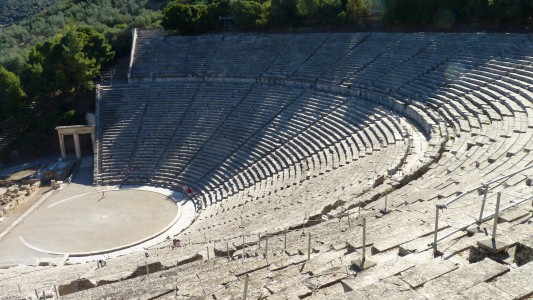
About 4th century BC.
Though the stone seats were later.
The circle is for the orchestra. The stage is just off to the left.
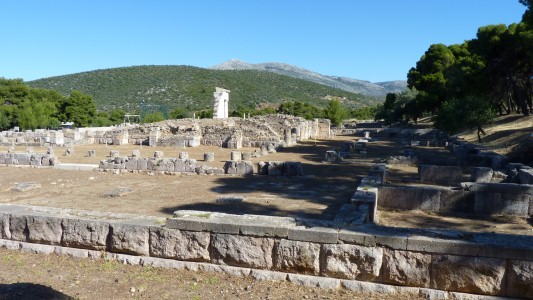
A hotel.
A very square building. Four squares.
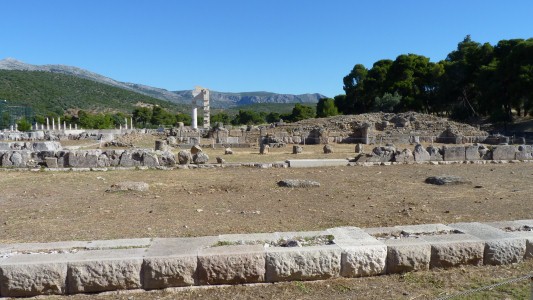
4th - 3rd century BC.
Ritual meals relating to the cult of Asklepios were consumed.
The pile of stones to the right is the outside of the theatre.
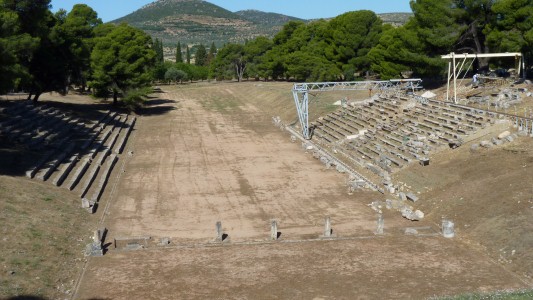
Not part of the pan-Hellenic games (of which Olympic Games were part).

Marble, not polystyrene.
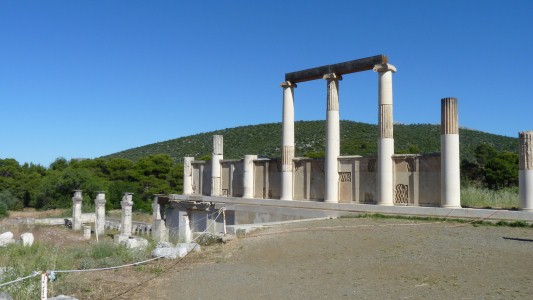
The cure starts downstairs to the left.
Then the sick move upstairs to the right.
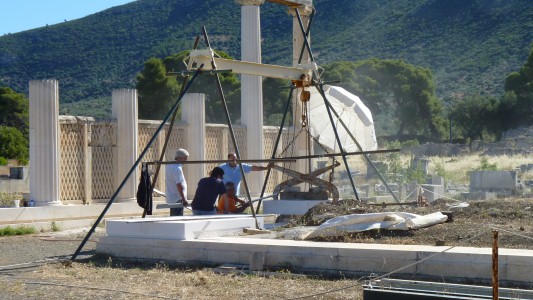
Once complete its time to start again.
Though that may be an optimistic estimate. In this case it may be time to start again before its finished.
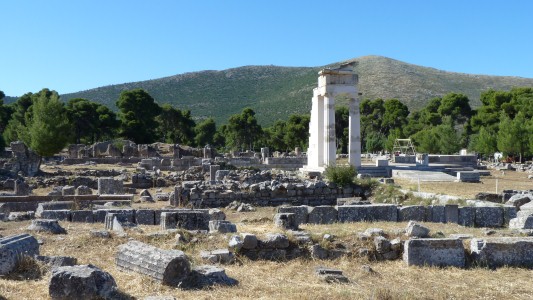
380 - 370 BC.
It seems to us that the "sanctuaries" like Olympia and Epiavros are targeted at particular gods with particular functions and contain temple, stadium, accommodation.
This particular god is a doctor.
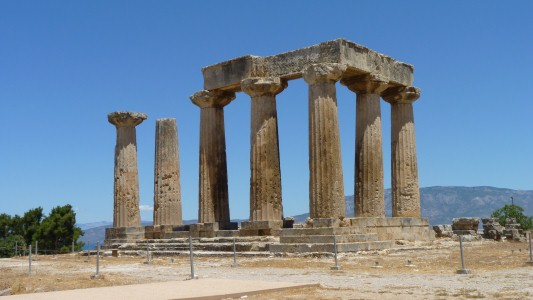
In the blink of an eye we are at Ancient Corinth.
The Temple of Apollo.
About 6th century BC.
How could anyone visit Greece without taking a photograph of some columns against a blue sky?
Simple doric columns in this case.


This is part of the north west shops.
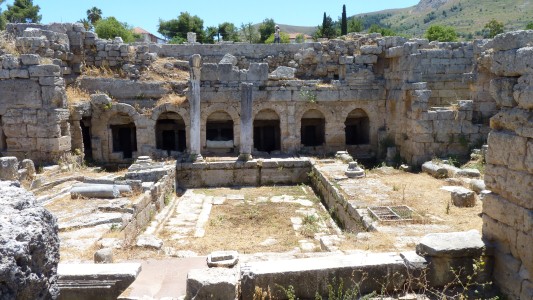
Rebuilt a few times. The last time by the Romans.
We could hear the water running underneath.
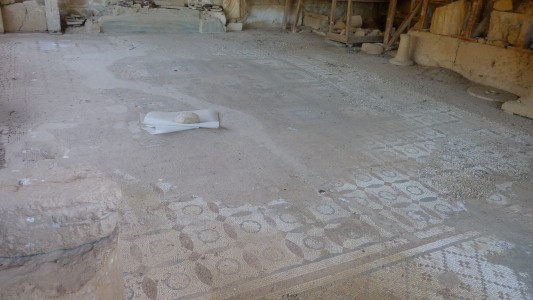
An interesting looking mosaic.
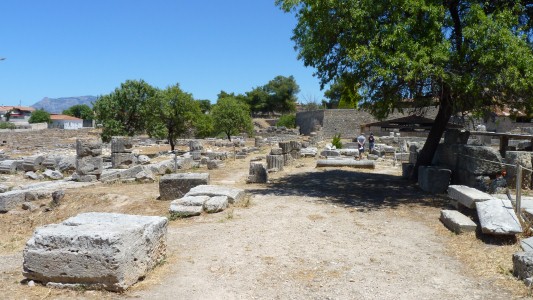
4th century BC.
Its taking us some time to learn the language. Stoa is simply a covered walkway or portico.
Usually a row of columns to hold the roof up.
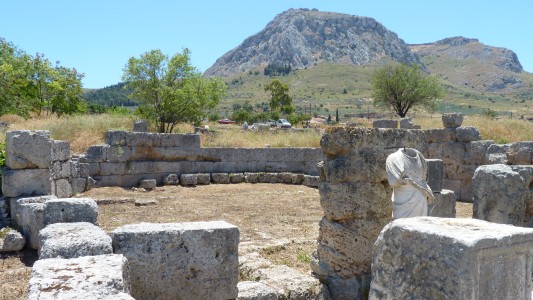

Must have stumped the archeologists.
And we guessed that these were corinthian columns, appropriate for Corinth.
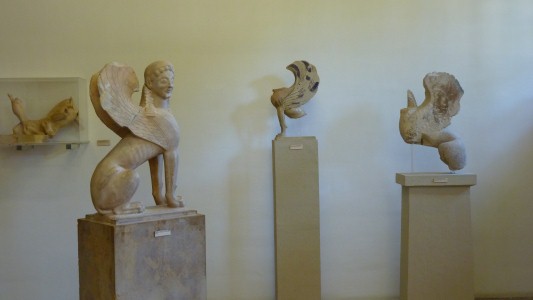
And what the connection with biblical letters to Corinthians may have been.
But alas, we found pottery and this interesting looking sphynx.

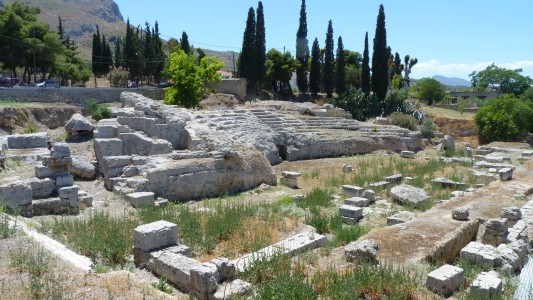
On the north side is the old theatre.
And a Roman Odeon.

Protected by the fortress of Acrocorinth above.
Three layers of fortifications.
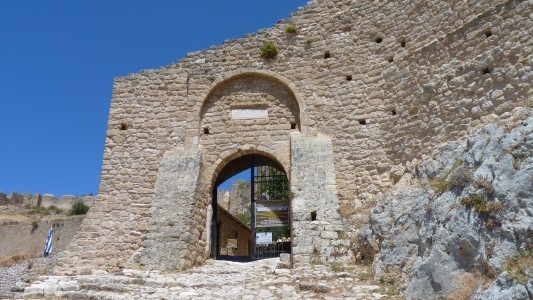
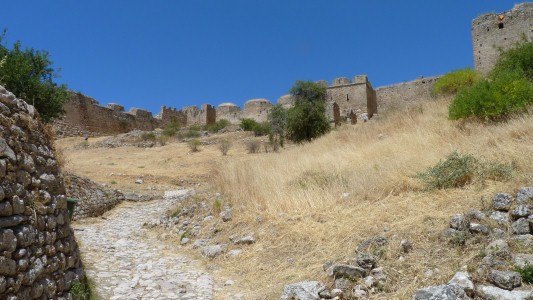
It was a long drive up the hill.
And its a long walk to the top.
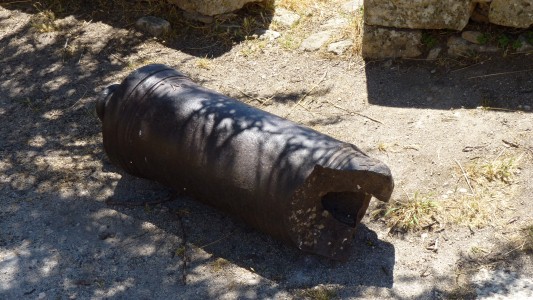
Typical brittle fracture.
The other half wasn't anywhere in sight.
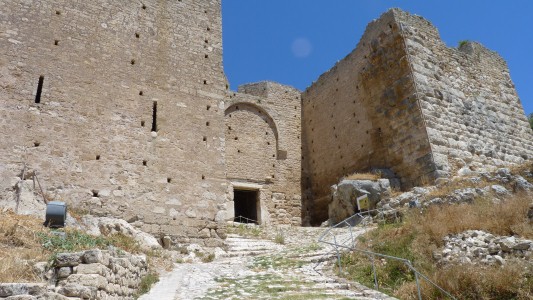
We spent a little while trying to make sense of the different styles of stonework.
And failed miserably.
There's suggestions of Cyclopean, Venetian, Ottoman, etc.


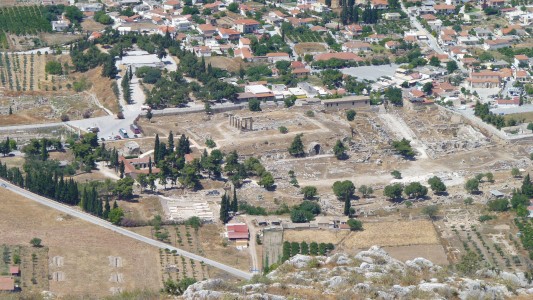
Its a long way down.
Maybe the canon was overloaded.

Lots of them.
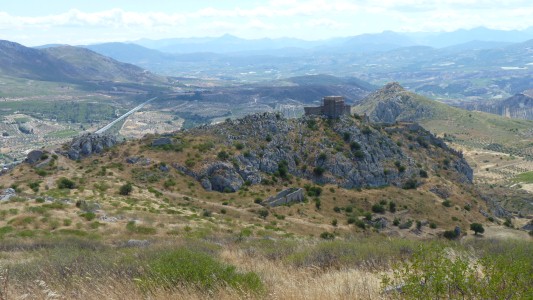
We walked almost round the walls by the time we realised how far it was.
This is from the high point which used to have a tower.
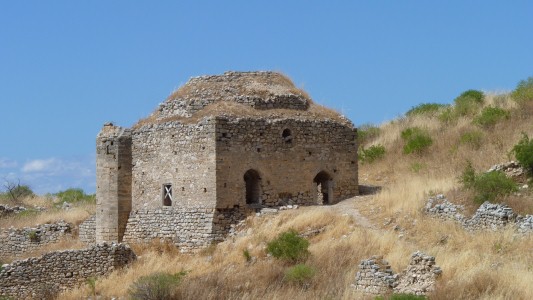
They fled from the plain when threatened.
Remains of one of the churches.
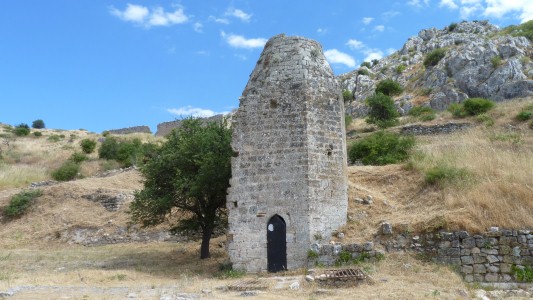
Above the inaccessible cistern.

Three ancient sites in one day, and 120 km of driving, was a heavy day.
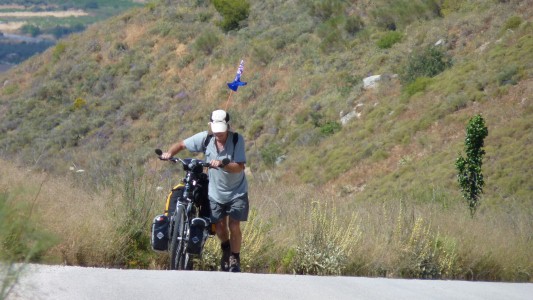
Ian. A lone Kiwi cyclist.
Day three of three months cycling in the Peloponese Penninsular.
Water and salt provided.


Along the isthmus, across the Corinth Canal.
21m wide at the water.
The ship is the Seabourn Spirit. Registered in Nassau.
Presumably sister ship of the Seabourn Odyssey that we saw in the Bay of Kota.
We've since learned that Greece has relaxed the old rule of cruise ships having to have a percentage of Greek sailors in their crews.
The number of cruise ships visiting has increased.
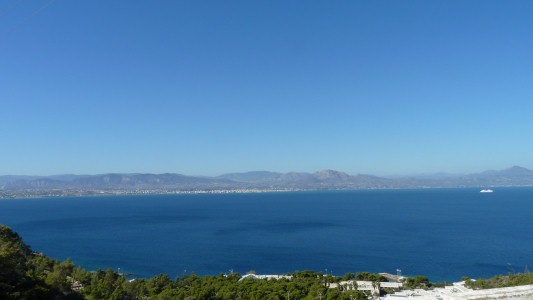
The high spot on the other side is the site of Acrocorinth.